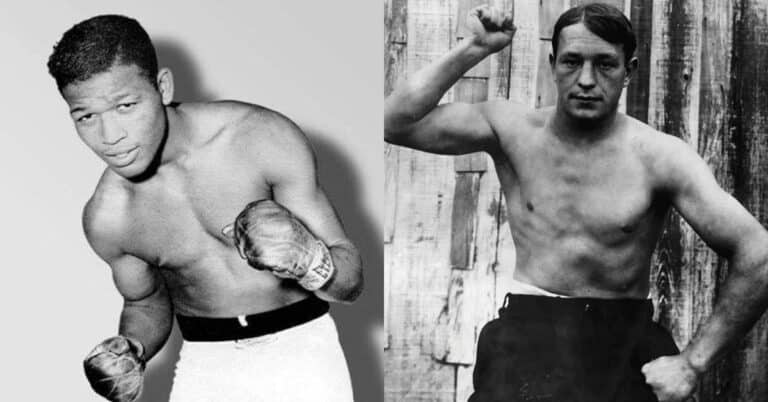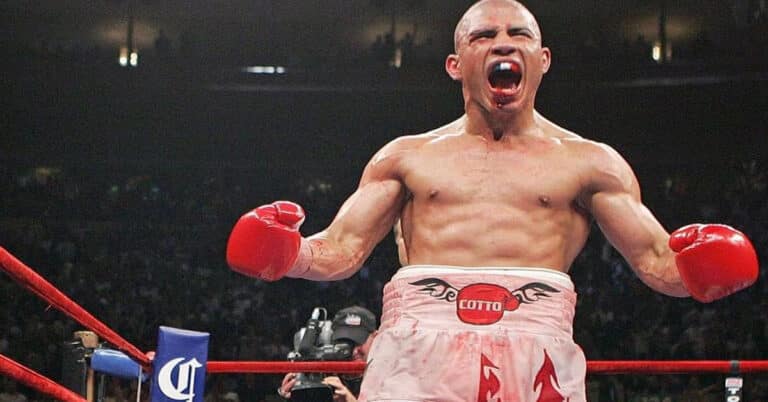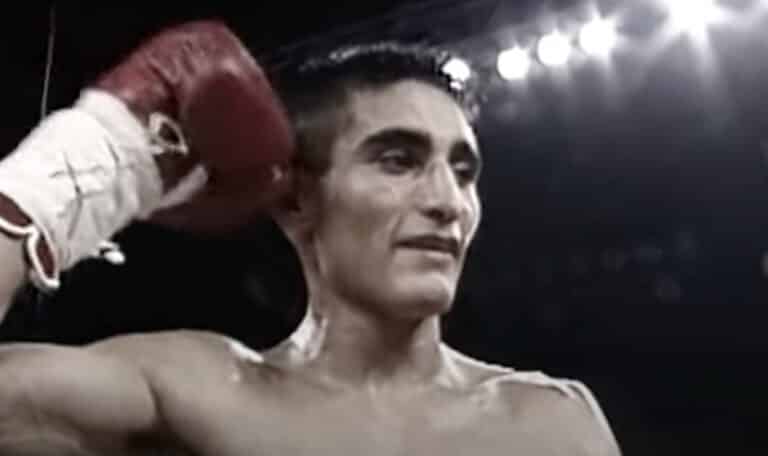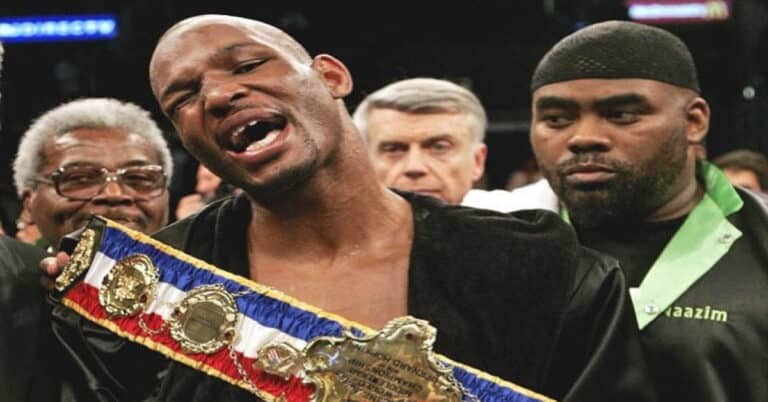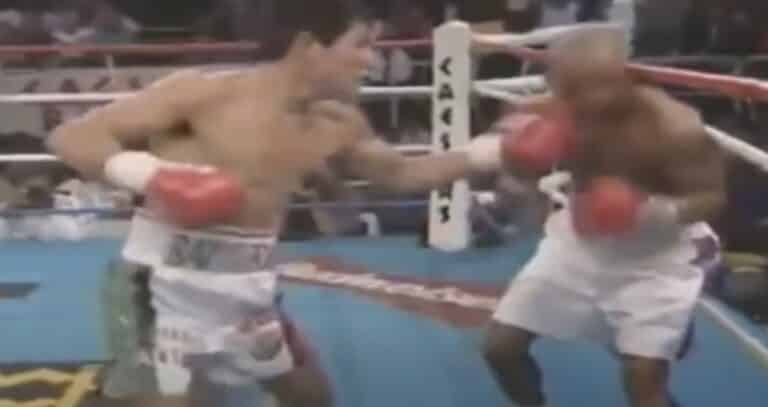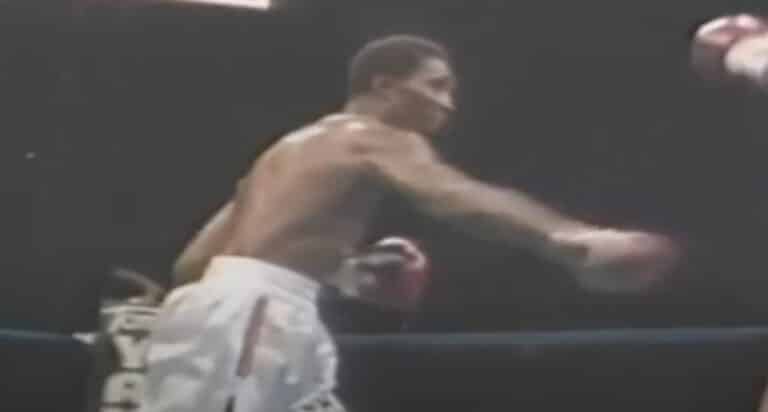Sugar Ray Robinson: A Biography!
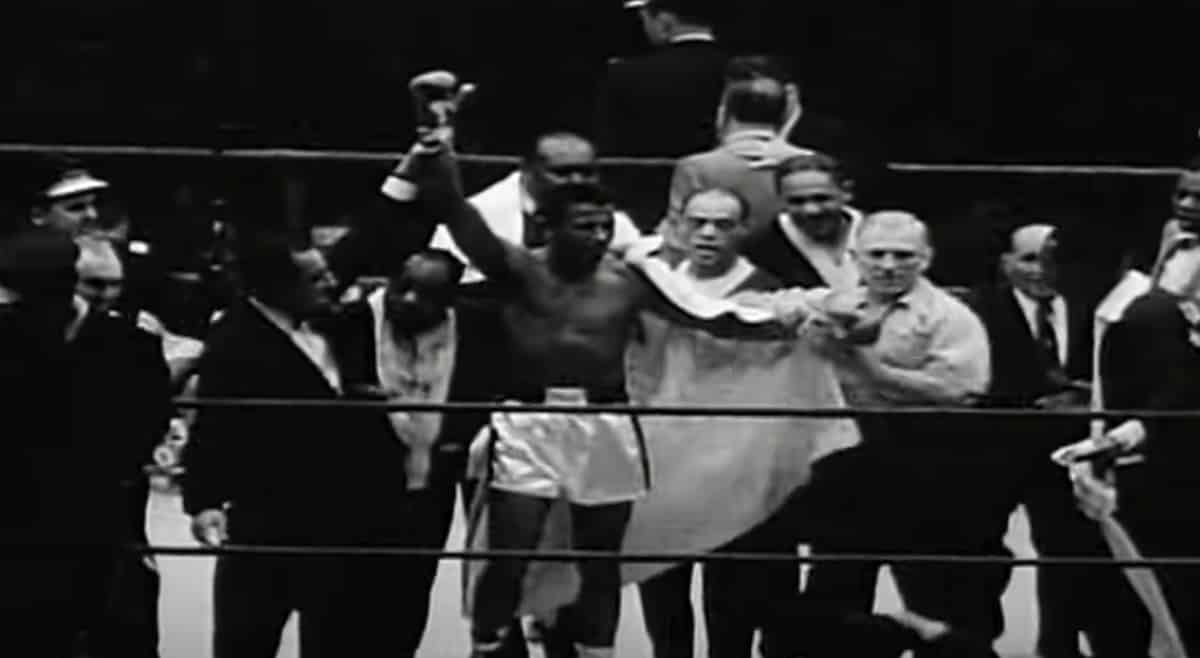
| Date of Birth: | May 3, 1921 |
| Place of Birth: | Ailey, Georgia |
| Died: | April 12, 1989 – Los Angeles, California |
| Gym: | Stillman’s Gym, New York |
| Boxing Career: | Amateur, Professional, Entertainer |
| Nickname: | Sugar Ray |
| Height: | 5 Ft 11 inches. 180cm |
| Reach: | 72 1/2 inches. 184cm |
| Stance: | Orthodox |
| Weight Class: | Lightweight, Welterweight, Middleweight, Light Heavyweight |
| Professional Record: | Total Fights: 201, Wins: 174, Wins by KO: 109, Losses: 19 Draws: 6, No Contest: 2 |
| Notable Fights: | Six fights vs Jake La Motta including the St Valentine’s Day Massacre as well as bouts against Randolph Turpin, Rocky Graziano and Joey Maxim amongst far too many others to mention. |
Sugar Ray Robinson: Overview
Frequently referred to as the greatest ‘pound for pound’ boxer of all time Walker Smith Jr. better known as Sugar Ray Robinson also topped so many greatest boxer of all time charts it belies belief (See Accolades later). Competing from 1940 to 1965 Sugar Ray compiled a simply unbelievable record (losing just once in his first 126 fights) leaving no doubt as to why he is cited by most boxing experts as the greatest boxer of all time – despite well-known proclamations to the contrary from one Muhammed Ali! For even Ali called Sugar Ray Robinson “the king, the master, my idol.“
Sugar Ray Robinson: Early Years & Origins of his Nickname!
Born Walker Smith Jr., to Walker Smith Sr. and Leila Hurst in Ailey, Georgia. Robinson was the youngest of three children. His father was a cotton, peanut, and corn farmer who initially moved the family to Detroit to find work in construction. Following the separation of his parents Walker Smith Jr would move with his mother to New York City at the age of twelve from where he would visit Times Square and dance for strangers in order to earn money to help his mother save for an apartment.
Originally, Walker aspired to be a doctor but after dropping out of DeWitt Clinton High School (in the Bronx) whilst in ninth grade, Walker switched his attention to boxing. At the age of 15, Walker would attempt to enter his first boxing tournament but was told he would first need to obtain an AAU membership card, something that was not legally feasible until he was 18 years of age. Walker showed at an early age that he would not easily be stopped! Circumventing the AAU’s age restriction by ‘borrowing’ a birth certificate from his friend Ray Robinson. When a lady in the audience at a fight in Watertown, New York, subsequently told him – he was as “sweet as sugar” he assimilated it into his assumed name and the legend that is known as “Sugar Ray Robinson” was borne.
Sugar Ray Robinson: Personal Life and Idols
Like many of the most successful boxers in history Robinson was no exception to having a troubled youth hood. He was a member of a street gang; married at 16 and divorced by 19, fathering one son in the process. Growing up, Robinson idolised Henry Armstrong and Joe Louis, actually living on the same block as Louis in Detroit when Robinson was 11 and Louis was 17.
Sugar Ray Robinson: Boxing Style
Robinson was the modern day definition of a ‘boxing puncher’. A complete fighter he was able to fight in almost any style and could easily switch accordingly. He might start one round coming out counterpunching, the next by brawling and the next fighting on the outside, flicking his jab. Robinson would use this mercurial ability to exploit his opponents’ weaknesses. Blessed with unbelievable hand speed and precision, he often fought in a very conventional way with a firm jab, but threw hooks and uppercuts in bombardments of a very unconventional way. Just take a look
Indeed such was his versatility, respected boxing analyst Bert Sugar stated, ‘Robinson could deliver a knockout blow going backwards’
Time magazine in 1951 also stated,
“Robinson’s repertoire, thrown with equal speed and power by either hand, includes every standard punch from a bolo to a hook—and a few he makes up on the spur of the moment.”
Robinson commenting himself that once a fighter had trained to a certain level, their techniques and responses become almost reflexive ‘You don’t think. It’s all instinct. If you stop to think, you’re gone.’
Take a look at how he achieved this!
Sugar Ray Robinson: Amateur Career
Sugar Ray Robinson had a dominant amateur career but due to the poor record keeping of the time, his exact amateur record is not known. Most boxing records usually report it as 85–0 with 69 knockouts, 40 of which were in the first round.
*Nb it has been reported (but not confirmed) that he lost to Billy Graham and Patsy Pesca as a teenager under his given name, Walker Smith Jr.
Nevertheless as an amateur ‘Ray’ won the New York Golden Gloves featherweight championship in 1939 defeating Louis Valentine on points and the New York Golden Gloves lightweight championship in 1940 defeating Andy Nonella by KO in round 2.
Sugar Ray Robinson: Professional Career & Summary
In 1940 at the age of 19 Sugar Ray Robinson turned professional and by 1951 had amassed a professional record of 128–1–2 with 84 knockouts. Indeed from 1943 to 1951 Robinson upheld an incredible 91-fight unbeaten streak, the third-longest in professional boxing history. See here for context.
Robinson was the World Welterweight Champion from 1946 to 1951, before moving up and also winning the World Middleweight title in 1951. Robinson retired in 1952, yet returned to the ring two-and-a-half years later to regain the Middleweight title in 1955. He then became the first boxer in history to win a divisional World championship five times. A feat he accomplished in 1958 by defeating Carmen Basilio to regain the Middleweight championship.
His full professional record is viewable here.
Sugar Ray Robinson vs Jake LaMotta (I-V)
Though Sugar Ray Robinson held an illustrious career, it was his six fights with Jake LaMotta that have come to define it as legendary. LaMotta famously later quipping ‘I fought Sugar Ray Robinson so many times, it’s a wonder I don’t have diabetes’.
The first fight took place on the 2nd October 1942 at Madison Square Garden in Sugar Ray’s middleweight debut. LaMotta would knock Ray down in the first round of the fight but Robinson would go on to win a unanimous 10-round decision.
A 10-round rematch took place on the 5th February, 1943 at the Olympia Stadium in Detroit, Michigan and saw Sugar Ray handed the first loss of his career. LaMotta in brutal form sending Ray through the ropes in an epic eighth round. Saved by the bell at the count of 9, Robinson couldn’t keep LaMotta at bay and was pummelled and outpointed by LaMotta for the rest of the fight. Ultimately losing by unanimous decision for the first time in more than a 100 successful fights.
It would not take Robinson long to enact revenge with the two incredibly meeting again less than two weeks later on the 26th February 1943, in another fight at the same stadium. Robinson this time winning a close but extremely contentious unanimous decision, even after being knocked down for a nine count in round seven. A victory made all the more sweet by the fact Robinson was due to be inducted into the army the next day.
On the 23rd February 1945, the duo held their fourth and final ‘10 rounder’ at Madison Square Garden, New York. This time there was nearly a two year gap between their most recent fights, though Sugar Ray would again win by a unanimous decision.
Robinson and LaMotta would meet yet again in a fifth bout over 12 rounds on the 26th September 1945 at Comiskey Park, Chicago. Robinson won in a very controversial split decision, which was severely booed by the 14,755 people in attendance. The details and scoring for which can be found here. How close the fight actually was, is given credence by the fighters themselves: Robinson saying afterward, “This was the toughest fight I’ve ever had with LaMotta.” and LaMotta citing later in his autobiography that the decision was widely criticised by several newspapers and boxing publishers.
Sugar Ray Robinson: First title and the Jimmy Doyle Incident
Just before Christmas 1946, Robinson (73-1-1) who unlike LaMotta had refused to co-operate with the mafia, finally got his title shot and won the vacant Welterweight championship with a unanimous 15-round decision over Tommy Bell.
It was a title defense against Jimmy Doyle which perhaps had a more disturbing effect on Ray than any fight or fighter. Initially scheduled to fight Doyle in June 1947, Robinson backed out after suffering a dream that he would kill Doyle. Convinced by both a priest and a minister to take the fight on the 25th June 1947, Robinson’s dream would become a true nightmare: Robinson knocking Doyle out and unconscious in the eighth round, which resulted in Doyle’s death later that night. At the time the coroner asked if Robinson figured to get Doyle “in trouble”, Robinson said, “Mister, it’s my business to get him in trouble.” Though later Robinson described Doyle’s death as ‘very trying’ so much so that after learning of Doyle’s intention to use the bout’s money to buy his mother a house, Robinson gave Doyle’s mother money from his next four bouts so she could purchase a home of her own.
Sugar Ray Robinson: ‘The St Valentine’s Day Massacre’
Ray’s sixth and final fight with LaMotta took place at Chicago Stadium. Scheduled for 15 rounds for the Middleweight title and held on the 14th February 1951, the fight became known as boxing’s version of the Saint Valentine’s Day Massacre. Notably because in the last few rounds, Robinson began to subject LaMotta to such a horrible beating, that LaMotta was soon unable to defend himself. LaMotta nevertheless, refused to go down and the referee had to step in stop the fight. Robinson thereby winning the undisputed Middleweight title by technical knockout in round 13.
Epic real life footage of one of the most brutal fights in history can be seen here;
Jake LaMotta (not one for platitudes) later paid Robinson perhaps the highest compliment he ever paid anyone.
“Sugar Ray was the greatest fighter who ever lived. He had more than a hundred fights without a loss. I was the first to beat him.”
Sugar Ray Robinson: Other Notable Fights
After winning his second world title, Robinson embarked on a European tour which took him all over the Continent. In his fight in Berlin against Gerhard Hecht, Robinson was disqualified for knocking his opponent out with a punch to the kidney: a punch legal in the US, but not in Europe. The fight as such was later revised to a no-contest.
In London, after already fighting six fights in six weeks, Robinson first lost the world Middleweight title to British boxer Randolph Turpin by unanimous decision in a sensational bout. Only his 2nd loss in 126 fights. But Robinson was far from done and three months later in a rematch in front of 60,000 fans at the Polo Grounds, Robinson knocked Turpin out in round ten to recover his title.
1952 saw Ray first beat Bobo Olson (whom he had previously beaten in 1950), by decision, before defeating legend and former champion Rocky Graziano by third round knockout. He then challenged the World Light Heavyweight champion Joey Maxim on the 25th July 1952 in a fight at Yankee stadium and under a temperature of 103 °F (39 °C). A fight which was to prove the only stoppage defeat of his entire career. The referee however was the first victim of the extreme heat and had to be replaced in round 10. Robinson leading on points on all 3 scorecards at the time, following suit by collapsing with exhaustion and blacking out at the end of round 13.
After the fight, Robinson gave up his title and retired with a record of 131–3–1–1. For 3 years thereafter he embarked on a career in show business, singing and tap dancing. But a decline of his businesses coupled with a lack of success in his performing career saw Robinson decide to return to the ring, resuming training in 1954.
Sugar Ray Robinson: A Comeback?
In 1955, Robinson returned to the ring winning five fights in succession before losing a decision to Ralph ‘Tiger’ Jones. Robinson would bounce back; winning the middleweight championship for a 3rd time with a third victory over Bobo Olson by second round knockout.
In 1957, Robinson would first lose his title to Gene Fullmer before winning it back for a 4th time in their rematch later in the year. The punch (a left hook) that ended the fight in the fifth round has been referred to by numerous boxing critics as the perfect punch. Viewable and explained by Sugar Ray himself here.
Later that year, Robinson would lose his title again to Carmen Basilio before regaining it for a record 5th time when he beat Basilio in the rematch by split decision. The two judges giving it to Robinson by wide margin with only the referee (who was loudly booed) siding with Basilio.
Thereafter Sugar Ray’s career would go into decline as he fought past his prime solely for the money. By 1965, an over-the-hill Robinson was broke and forced to fight five times in 36 days for as little as $1,100 a night, against opposition once ‘not fit to lace his gloves’, yet who now fought and won against him. Indeed, by the time of his retirement on the 11th November 1965, famed sports author Pete Hamill wrote that one of the saddest experiences of his life was watching Robinson lose to Joey Archer in his final bout.
Sugar Ray Robinson: Retirement and Later Years
Renowned for his classy and flamboyant life outside the ring, Robinson is credited as being the originator of ‘entourages’ which surround modern sports stars. Relishing his celebrity, Robinson was accompanied by a large group of family members, trainers and women wherever he went. Indeed, he would parade around Harlem in a pink Cadillac and make appearances at his high-profile Harlem nightclub. Unapologetic of his grandiose lifestyle, Robinson was forced to continue boxing much longer than he should have. In a similar fashion to his great rival Jake LaMotta when he retired from boxing in 1965, Robinson’s attempted career as an entertainer was not successful and he struggled financially until his death on the 12th April 1989 at the Brotman Medical Centre Los Angeles, aged 67. He was suffering from Alzheimer’s disease and diabetes at the time.
A thoughtful, respected and caring individual some of his more thought provoking reflections can be found here Sugar Rays Words of Wisdom!
Sugar Ray Robinson: Interesting Facts
- Robinson like many other boxers was a teenage hoodlum.
- On the 27th February 1943, Robinson was inducted into the United States Army, where he was again referred to as Walker Smith. Robinson had a 15-month military career before being honourably discharged on medical grounds. During his time in the Army, Robinson served with Joe Louis; the pair going on tours where they performed exhibition bouts in front of US Army troops.
- Whilst each of his 6 fights with Jake La Motta was close, Robinson won five of them. Notably, the St Valentine’s Day Massacre.
- LaMotta remained one of the few fighters Robinson was ever unable to knockdown. Despite having one of the best KO records in boxing history.
- Robinson stated that the training he did in his attempts to establish himself as a dancer were harder than any he undertook during his boxing career!
The final interesting fact quite remarkable when you consider ‘Ray’ was noted for his consistent, daily, phenomenally punishing training sessions as seen earlier.
Sugar Ray Robinson: Some of his Accolades
- The No 1 ‘pound-for-pound’ Boxer of all Time.
- ESPN’s Greatest Boxer of all Time.
- ESPN’s No 1 Fighter of the Century.
- Ring Magazine No 1 – 80 Greatest Fighters of 80 Years.
- Named “fighter of the year” twice: first for his performances in 1942. Then nine years and over 90 fights later, for his efforts in 1951.
- Elected to the Ring Magazine boxing Hall of Fame in 1967
- Inducted into the International Boxing Hall of Fame in 1990.
- Inducted into the Madison Square Garden Walk of Fame at its inception in 1992
- Featured on a commemorative stamp issued by the United States Postal Service in 2006.
- Sugar Ray Robinson was a world champion at Welterweight and a five time world champion at Middleweight.
An absolute must watch highlights reel of many notable moments in Robinson’s career complete with expert analysis and commentary can be viewed here:
Sugar Ray Robinson – The Greatest.
If you weren’t a fan before (this writer wasn’t) I challenge you not to be after!
Was he the GOAT? Again, prior to this in depth research I would have said NO! Now I am finding it hard not to say YES.

